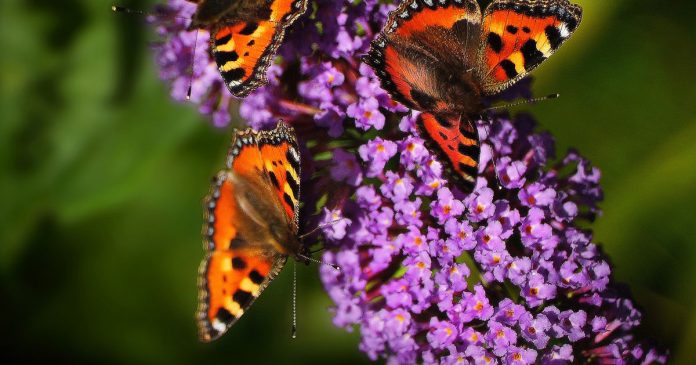Buddleias, or ‘the butterfly bush’, is a popular sight in UK gardens. People admire them for their rich purple plumage and sweet honey-like scent.
However, their angelic image belies a darker reality. Despite the garden flower’s beloved status, experts warn that it is highly invasive and can cause severe structural damage – similar to the dreaded Japanese knotweed. The Environmental Controls team have warned that it can “exploit cracks, mortar joints and other weak areas in buildings or hard surfaces” and is just as difficult to get rid of.
Currently, Japanese knotweed is listed under several Schedule 9 and 14 of the Wildlife and Countryside Act 1981, which protects against invasive animal and plant species. This means it is an offence to allow the plant to escape or cause it to grow in the wild.
Meanwhile, buddleias are not listed under the Act, yet they can cause similar problems. Their expansive fast-growing root system can easily worm its way into roofs, gutters and walls, exerting pressure on buildings.
Even worse, the canes can grow to about 15 feet tall, making them a truly formidable sight. Since they reproduce via airborne seeds, they are incredibly hard to control, as it is hard to predict where they will disperse next.
But how did this non-native species find its way into the UK? Buddleias are native to eastern China and were first encountered by European explorers in the late 1800s, who brought them back to the continent with them.
The flowers became ubiquitous in the UK in the 1940s and 50s, as they spread quickly through bombed out areas in London. Interestingly, the concrete, brickwork and limestone used for the city’s infrastructure created a similar environment to China’s river valleys.
Unfortunately, this also makes buildings vulnerable to their roots. In fact, Environmental Controls report that they cause an estimated £1 million in damage to buildings every year.
Jennifer Holmes is a spokesperson from Environmental Controls. She explained: “Both buddleia and knotweed can cause significant damage to building structures, however buddleia is less likely to damage underground infrastructure due to its shallow root system.
She continued: “Both are highly invasive and difficult to eradicate, but buddleia (unlike knotweed) can grow in hard to access areas such as roofs, guttering, window sills and walls basically anywhere that a seed lands it can grow. Knotweed on the other hand requires its roots to be on the ground in order to form plants.”
If you have a buddleia in your garden, it may be a good idea to remove it, particularly if it begins growing on your home. To do this, you will need to remove their entire root system.
In order to effectively remove the plant, you will need tools such as a spade, gloves and shears. Fortunately, their root systems aren’t particularly deep, so it shouldn’t take too much effort to dig up.
At Reach and across our entities we and our partners use information collected through cookies and other identifiers from your device to improve experience on our site, analyse how it is used and to show personalised advertising. You can opt out of the sale or sharing of your data, at any time clicking the “Do Not Sell or Share my Data” button at the bottom of the webpage. Please note that your preferences are browser specific. Use of our website and any of our services represents your acceptance of the use of cookies and consent to the practices described in our Privacy Notice and Cookie Notice.


